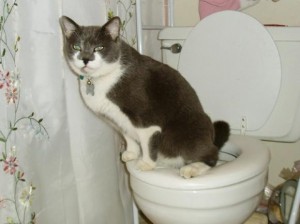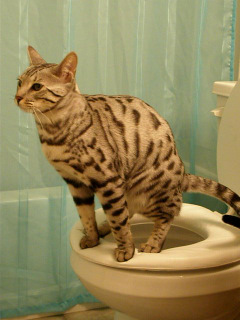How You Ought to Never Dispose of Animal Waste Down the Toilet
How You Ought to Never Dispose of Animal Waste Down the Toilet
Blog Article
Are you currently hunting for information on Why you should never flush dog poop down the toilet?

When it comes to dealing with waste, especially animal waste, many people frequently consider the practical option of flushing it down the bathroom. However, this relatively very easy service can have significant consequences for the atmosphere and public health. In this article, we'll check out why flushing animal waste down the commode is a negative concept and offer different approaches for correct disposal.
Intro
Correct garbage disposal is important for preserving environmental sustainability and public health. While it might seem harmless to purge animal waste down the bathroom, it can result in various problems, both for the environment and human health.
Threats of flushing animal waste
Ecological effect
Flushing pet waste presents harmful bacteria and pathogens into rivers, which can adversely influence aquatic ecosystems. These virus can pollute water resources and harm marine life, disrupting delicate ecological communities.
Public health issues
Animal waste consists of damaging bacteria such as E. coli and Salmonella, which can present significant health and wellness dangers to people. Flushing animal waste down the toilet can infect water materials, causing the spread of illness and infections.
Alternatives to flushing
Rather than flushing pet waste down the commode, there are numerous different disposal techniques that are extra eco-friendly and sanitary.
Composting
Composting animal waste is an environment-friendly method to deal with it. By composting, raw material is broken down right into nutrient-rich dirt, which can be used to fertilize yards and plants.
Garbage dump disposal
Throwing away pet waste in a garbage dump is an additional option. While not as eco-friendly as composting, it is a much safer option to flushing, as it avoids the contamination of water sources.
Family pet garbage disposal systems
There are specialized animal waste disposal systems available that safely and hygienically throw away animal waste. These systems often use enzymes to break down waste and remove odors.
Actions to appropriate pet garbage disposal
To make sure proper disposal of animal waste, adhere to these actions:
Scooping and nabbing waste
Routinely scoop and bag animal waste making use of naturally degradable bags. This prevents waste from infecting the setting.
Using marked waste containers
Dispose of bagged animal waste in marked waste bins, such as compost bins or land fill containers. Stay clear of flushing it down the toilet in any way expenses.
Cleaning up litter boxes and family pet areas routinely
Regularly tidy litter boxes and pet locations to avoid the build-up of waste and microorganisms. Use pet-safe cleansing products to keep hygiene.
Advantages of appropriate disposal methods
Taking on correct disposal approaches for pet waste uses numerous benefits:
Minimized environmental pollution
Appropriate disposal methods lower the danger of environmental pollution, shielding rivers and communities from contamination
Lessened threat of water contamination.
By staying clear of flushing animal waste down the bathroom, the danger of water contamination is substantially reduced, securing public health.
Enhanced cleanliness and hygiene
Correct disposal methods promote far better cleanliness and health, producing a safer setting for both people and pets.
Final thought
Finally, flushing animal waste down the bathroom is dangerous to the environment and public health. By embracing alternate disposal approaches and complying with correct waste management practices, we can decrease the adverse effect of animal waste and add to a cleaner, healthier world.
What To Do With Dog Poo – The Do's And Don'ts Of Disposing Of Faeces
Dog poo bins
Some councils provide dedicated dog waste bins in popular dog-walking areas that can take dog poo that has been bagged but you can legally dispose of dog waste in any public litter bin, as long as it is securely bagged. This also applies to your wheelie bin at home.
Do not flush
Water companies do not recommend flushing dog faeces down the toilet because certain parasites can survive the water processing treatment and are potentially harmful to humans. You should also never consider flushing dog poo that has been bagged down the toilet as the bags will not break down and instead create severe blockages in the sewage system.
In the woods
The Forestry Commission promotes a ‘stick and flick’ method for dealing with waste in the woods. This means finding a stick and using it to flick any poo from off the path so that it is out of the way of other walkers. You could also bury it as long as it is not in an area where there might be livestock.
Livestock
Parasites found in dog poo can be transmitted to livestock if they inadvertently eat infected faeces that has been left on grazing land. This could result in the death of sheep or abortion in cattle so you should always make sure you pick up your dog’s waste in fields where livestock could be present.

Regularly tidy litter boxes and pet locations to avoid the build-up of waste and microorganisms. Use pet-safe cleansing products to keep hygiene.
Advantages of appropriate disposal methods
Taking on correct disposal approaches for pet waste uses numerous benefits:
Minimized environmental pollution
Appropriate disposal methods lower the danger of environmental pollution, shielding rivers and communities from contamination
Lessened threat of water contamination.
By staying clear of flushing animal waste down the bathroom, the danger of water contamination is substantially reduced, securing public health.
Enhanced cleanliness and hygiene
Correct disposal methods promote far better cleanliness and health, producing a safer setting for both people and pets.
Final thought
Finally, flushing animal waste down the bathroom is dangerous to the environment and public health. By embracing alternate disposal approaches and complying with correct waste management practices, we can decrease the adverse effect of animal waste and add to a cleaner, healthier world.
What To Do With Dog Poo – The Do's And Don'ts Of Disposing Of Faeces
Dog poo bins
Some councils provide dedicated dog waste bins in popular dog-walking areas that can take dog poo that has been bagged but you can legally dispose of dog waste in any public litter bin, as long as it is securely bagged. This also applies to your wheelie bin at home.
Do not flush
Water companies do not recommend flushing dog faeces down the toilet because certain parasites can survive the water processing treatment and are potentially harmful to humans. You should also never consider flushing dog poo that has been bagged down the toilet as the bags will not break down and instead create severe blockages in the sewage system.
In the woods
The Forestry Commission promotes a ‘stick and flick’ method for dealing with waste in the woods. This means finding a stick and using it to flick any poo from off the path so that it is out of the way of other walkers. You could also bury it as long as it is not in an area where there might be livestock.
Livestock
Parasites found in dog poo can be transmitted to livestock if they inadvertently eat infected faeces that has been left on grazing land. This could result in the death of sheep or abortion in cattle so you should always make sure you pick up your dog’s waste in fields where livestock could be present.

As an enthusiastic reader on Don't Flush Your Pets Poo Down The Loo, Vet Warns, I was thinking sharing that short article was a good idea. Be sure to take the time to distribute this content if you enjoyed it. Kudos for your time. Please come by our website back soon.
Visit Page Report this page